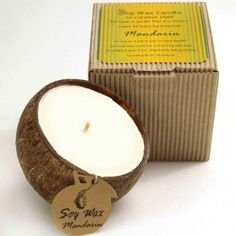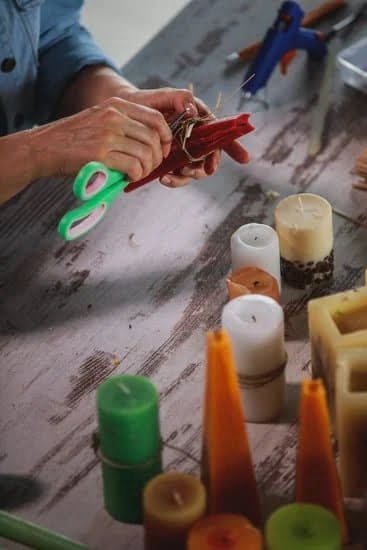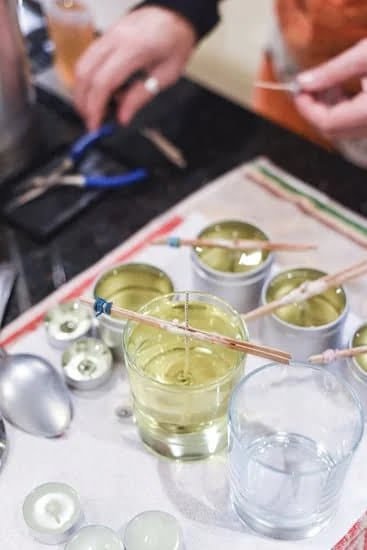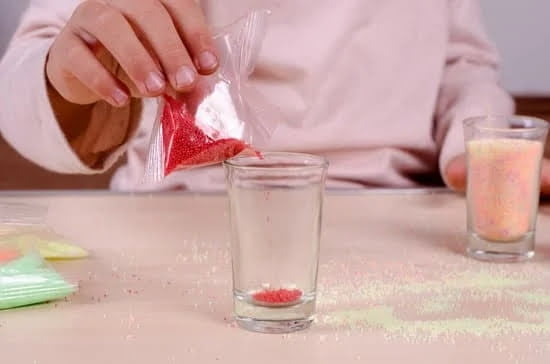When it comes to the art of candle making, one might assume that wax temperature is just a minor detail in the process. However, nothing could be further from the truth. In fact, the proper wax temperature plays a crucial role in creating high-quality and visually appealing candles. Whether you are a beginner or an experienced candle maker, understanding the importance of wax temperature is essential for achieving superior results.
Candle making is both a science and an art, with each step requiring careful attention to detail. One of these critical steps involves precisely heating the wax to the correct temperature. This is because different waxes have specific melting points, and deviations from these temperatures can result in various issues during the candle-making process.
The significance of wax temperature lies in its impact on both the appearance and quality of candles. If the wax is heated too high or too low, it can lead to poor adhesion, uneven burning, or even cracking and frosting on the candle surface. Therefore, achieving and maintaining the right wax temperature is vital for producing visually stunning candles that burn evenly and provide a satisfying scent release.
In this article, we will delve into the science behind heating wax to the right temperature for candle making. We will explore how temperature affects different candle types and materials, as well as common mistakes to avoid when it comes to managing wax temperature.
Additionally, we will provide practical tips, techniques, tools, and troubleshooting advice for ensuring precise control over wax temperature throughout the candle-making process. By mastering the art of wax temperature control, you can elevate your candle-making skills and create exquisite candles that are both visually stunning and exceptional in quality.
Understanding the Role of Wax Temperature in Candle Making Process
When it comes to candle making, understanding the role of wax temperature is crucial for achieving successful results. The temperature at which you heat your wax plays a significant role in many aspects of the candle making process, including the consistency, fragrance throw, and burn time of the finished product. In this section, we will explore the importance of wax temperature in candle making and how it affects the overall quality of your candles.
The Impact on Consistency
One of the primary reasons why wax temperature is important in candle making is its effect on the consistency of the melted wax. Different types and blends of wax have different melting points, and reaching and maintaining the appropriate temperature is essential for achieving a smooth and even consistency.
If the wax is overheated, it can become too thin or watery, resulting in uneven pouring and pooling issues when lit. On the other hand, if the wax is not heated enough, it may not melt completely or mix properly with any added fragrance oils or colorants.
Enhancing Fragrance Throw
Another critical aspect affected by wax temperature is fragrance throw-the ability of a candle to release its scent when burned. Achieving optimal scent throw requires heating the wax to a specific temperature that allows for proper dispersion and evaporation of fragrance oils into the surrounding air.
If the wax is heated at too high temperatures, it can cause rapid evaporation of some delicate fragrances, resulting in a weaker scent throw. Conversely, if not heated enough, fragrance oils may not fully incorporate into the melted wax or release their aroma effectively.
Affecting Burn Time
The burn time of a candle is also influenced by the temperature at which it was made. Heating your wax to an appropriate temperature helps ensure that it will solidify correctly during cooling, resulting in a longer-lasting candle.
If temperatures are too high during pouring and cooling stages, your candles may shrink, crack, or have a shorter burn time. On the other hand, if the wax is not heated enough, it may not properly adhere to the container or wick, leading to tunneling and wasted wax.
Understanding the role of wax temperature in candle making allows you to control and manipulate various aspects of your candles, ultimately leading to superior results. In the next section, we will delve into the science behind heating wax to the right temperature, further exploring how temperature affects different types of candles and materials used in candle making.
The Science Behind Heating Wax to the Right Temperature
Heating wax to the right temperature is a crucial step in the candle making process. The science behind this lies in understanding the behavior of wax when it is melted and cooled.
When wax is heated, its molecules become more energized and start to move faster. As a result, the wax begins to melt and turn into a liquid state. This is why it is important to heat the wax slowly and evenly, allowing enough time for all the molecules to reach the desired temperature.
The ideal temperature for melting wax varies depending on the type of wax being used. For example, soy wax has a lower melting point than beeswax or paraffin wax. It is important to follow specific guidelines provided by the manufacturer or a trusted resource to ensure that you are heating your wax at the correct temperature.
To achieve the right temperature, it is recommended to use a double boiler setup or a dedicated melting pot with precise temperature controls. This helps in preventing hot spots and ensures even heating throughout. Using a thermometer specifically designed for candle making is also helpful in monitoring and maintaining the desired temperature accurately.
In summary, understanding the science behind heating wax to the right temperature is essential for successful candle making. Properly heating the wax allows its molecules to liquefy uniformly and ensures that it cools down properly before pouring into molds or containers. By following recommended guidelines and using appropriate tools and equipment, you can achieve superior results in your candle making endeavors.
Avoiding Common Candle Making Mistakes
Candle making can be a delicate and precise process, and one of the most critical factors to consider is temperature control. Proper temperature control plays a crucial role in ensuring the quality, appearance, and overall success of your homemade candles. This section will delve into why temperature control matters in candle making and the common mistakes that can arise when this aspect is overlooked.
The Importance of Temperature Control
Temperature control is vital because it directly impacts the melting and cooling process of wax. When wax is heated to the right temperature, it becomes a clear liquid that can hold fragrance oils and dyes evenly. Maintaining the proper temperature throughout the entire candle making process ensures that your end product will have a smooth finish, even consistency, and optimal scent throw.
Common Candle Making Mistakes Due to Inaccurate Temperature Control
One of the most common mistakes in candle making is not heating the wax to the correct temperature before pouring it into molds or containers. If the wax is too cool, it may not fully adhere to the container’s sides or cause uneven cooling, resulting in sinkholes or cratering. On the other hand, if the wax is too hot when poured, it can lead to shrinkage or cracking as it cools.
Another mistake that often arises from poor temperature control is improper fragrance throw. Fragrance oils have their own heat tolerance range, and if they are added to wax that is too hot or cold, they may evaporate too quickly or not disperse evenly throughout the candle. This can result in weak or inconsistent scent when burning.
Tips for Achieving Proper Temperature Control
To avoid these common mistakes caused by inaccurate temperature control, there are several tips you can follow:
- Use a reliable thermometer: Investing in a high-quality thermometer designed specifically for candle making will help you accurately measure your wax’s temperature at each stage of the process.
- Identify temperature ranges for different wax types: Different types of wax have different melting and pouring temperatures. Familiarize yourself with the specific temperature ranges recommended for the type of wax you are using.
- Follow instructions and recipes carefully: Always follow instructions or recipes provided by experienced candle makers. They usually provide precise temperature guidelines that should be followed for optimal results.
By paying close attention to temperature control during candle making, you can avoid common mistakes and ensure that your candles turn out beautifully every time. The next section will discuss in detail the ideal wax temperature for different candle types and materials.
The Ideal Wax Temperature for Different Candle Types and Materials
The ideal wax temperature for different candle types and materials plays a crucial role in the final appearance and quality of the candles. Each type of candle requires specific wax temperature to achieve optimal results.
For paraffin wax candles, the ideal temperature range is typically between 120°F to 150°F (49°C to 66°C). This range allows the wax to melt evenly and thoroughly while ensuring that it does not become too hot or boil. Boiling can lead to air bubbles forming in the candle, affecting its aesthetic appeal.
In contrast, soy wax candles have a lower melting point compared to paraffin wax. The ideal temperature for melting soy wax ranges from 110°F to 120°F (43°C to 49°C). Exposing soy wax to higher temperatures can result in discoloration and scorching, leading to an inferior end product.
Beeswax, which is known for its natural properties and pleasant scent, requires a higher melting temperature than both paraffin and soy waxes. To achieve the best results when working with beeswax, it is recommended to heat it between 145°F to 175°F (63°C to 79°C). This will allow the beeswax to melt completely without overheating or degrading its natural qualities.
It is important for candle makers to understand these specific temperature requirements because failure to do so can result in candles that burn unevenly, have poor scent throw, or exhibit unsightly blemishes like sinkholes or frosty appearances.
By heating different types of wax at their respective ideal temperatures, candle makers can ensure that their finished products are visually appealing, have optimum burning performance, and retain their desired scent profiles. Experimentation and careful observation are key factors in finding the perfect balance between heat and cooling times for different types of wax used in candle making.
The Impact of Incorrect Wax Temperature on Candle Appearance and Quality
In candle making, achieving the correct wax temperature is crucial for producing candles with a desired appearance and quality. When wax is heated to an incorrect temperature, it can have negative effects on the final product.
One of the main impacts of incorrect wax temperature is poor adhesion of fragrance oils and dyes to the wax. Wax that is too hot or too cold may not effectively blend with these additives, resulting in uneven distribution and weak scent throw. This can lead to candles that either have little to no fragrance or candles that have an overpowering scent.
Another consequence of incorrect wax temperature is improper melting and pouring. If the wax is too hot, it may cause excessive shrinkage and sinking when cooled, resulting in unsightly sinkholes or tunneling within the candle. On the other hand, if the wax is too cold, it may solidify too quickly and leave air pockets or bubbles within the candle.
Additionally, improper wax temperature can affect burn performance. Candles made with improperly heated wax may have issues with excessive soot, uneven melting, and tunneling during burning. These issues can shorten the overall burn time and reduce the quality of the candle.
| Effect | Description |
|---|---|
| Poor Fragrance Adhesion | Uneven distribution of fragrance oils and dyes in the wax; weak scent throw in finished candles. |
| Melting and Pouring Issues | Excessive shrinkage/sinking or air pockets/bubbles within candles due to incorrect cooling rate. |
| Burn Performance Problems | Excessive soot, uneven melting, tunneling during burning; shorter overall burn time. |
Practical Tips and Techniques for Achieving the Right Wax Temperature
To achieve the best results in candle making, it is crucial to have precise control over the temperature of the wax. Here are some practical tips and techniques to help you achieve the right wax temperature:
- Use a reliable thermometer: Invest in a good quality thermometer specifically designed for candle making. This will allow you to accurately measure and monitor the temperature of the wax throughout the melting and pouring process.
- Melt the wax slowly and evenly: It is important to melt your wax slowly and evenly to avoid overheating or scorching. Use a double boiler or a dedicated melter designed for candle making to provide a gentle and consistent heat source.
- Stir regularly: While melting the wax, be sure to stir it regularly with a heat-resistant utensil. This helps distribute the heat evenly and prevents hot spots from forming.
- Remove from heat at the right temperature: Different types of waxes have different melting points, so it is essential to know the specific temperature at which your particular wax should be removed from the heat source. This information can usually be found on the packaging or supplier’s instructions.
- Avoid sudden temperature changes: Rapidly cooling hot wax can lead to cracking or frosting on the surface of the candle. To prevent this, allow the melted wax to cool gradually at room temperature before pouring into molds or containers.
- Keep an eye on ambient conditions: The ambient temperature and humidity in your workspace can also affect how quickly or slowly your wax cools down after being melted. Be mindful of these factors when working with your candles.
By following these practical tips and techniques, you can ensure that your candles are made with precisely heated wax, resulting in superior quality and appearance.
| Practical Tips | Techniques |
|---|---|
| Use a reliable thermometer | Melt the wax slowly and evenly |
| Stir regularly | Remove from heat at the right temperature |
| Avoid sudden temperature changes | Keep an eye on ambient conditions |
Tools and Equipment for Ensuring Precise Wax Heating in Candle Making
Ensuring precise wax heating in candle making is crucial for achieving consistent and high-quality results. To achieve this, it is important to have the right tools and equipment that can help maintain and monitor the temperature throughout the process.
One essential tool for precise wax heating is a reliable thermometer. A thermometer allows you to accurately measure the temperature of the wax, ensuring that it is heated to the optimal range for your specific candle type. There are various types of thermometers available for candle making, such as digital thermometers or glass mercury thermometers. Whichever type you choose, make sure it has a wide temperature range and is easy to read.
In addition to a thermometer, having a heat source that provides even and controlled heat is crucial. One popular option is a double boiler system, which consists of two pots-one larger pot filled with water (acting as a heat buffer) and one smaller pot containing the wax.
The water in the larger pot gently heats the wax in the smaller pot, preventing direct contact between the heat source and the wax. This helps prevent overheating and scorching of the wax.
Another important tool for precise wax heating is a stirrer or whisk. Stirring or whisking the melting wax helps distribute heat evenly and promotes even melting of solid pieces of wax. It also helps ensure that any additives or fragrance oils are thoroughly mixed into the melted wax.
Having these tools and equipment not only helps maintain precise wax heating but also ensures safety during the candle making process. It is important to invest in high-quality tools that are specifically designed for candle making purposes to achieve consistent results and minimize any potential risks or hazards.
Troubleshooting
Having the right wax temperature is crucial in candle making as it directly impacts the quality and appearance of the final product. However, sometimes despite our best efforts, issues with wax temperature can arise. In this section, we will discuss common wax temperature issues and provide practical solutions for fixing them.
One common issue that candle makers may encounter is overheating the wax. When the wax is heated to a temperature higher than recommended, it can lead to issues such as discoloration, poor fragrance retention, and even cracking or shattering of the candle. To fix this issue, it is important to first remove the heat source immediately and allow the wax to cool down gradually.
You can also add cooled unmelted wax in small amounts to help lower the overall temperature. It’s essential to monitor the temperature closely while doing this to prevent overheating again.
On the other hand, if your wax is not reaching the desired temperature, it can result in poor scent throw and improper setting of the candle. This issue usually occurs when using inadequate heat sources or not giving enough time for proper melting.
To fix this problem, you can try using a different heating method or increasing the heat source’s power slightly. Keep in mind that different types of waxes require different heating times and methods, so be sure to follow guidelines specific to your chosen wax type.
Another common issue is temperature fluctuations during cooling. Rapid cooling can cause uneven texture and surface imperfections on candles, while slow cooling can result in sinkholes or concave tops. To address these problems, ensure a consistent environment by avoiding drafts or sudden changes in room temperature while your candles are setting. Placing your candles on a cooling rack or tray can also help promote more even cooling.
By being aware of these common troubleshooting techniques and having a good understanding of how wax temperature affects candle making outcomes, you will be better equipped to fix any issues that may arise. Remember, practice makes perfect, and with time and experience, you will become skilled in maintaining the optimal wax temperature for superior candle making results.
Conclusion
In conclusion, understanding and mastering the art of wax temperature is essential for achieving superior results in candle making. The temperature at which you heat the wax plays a crucial role in various aspects of the candle making process, including appearance, quality, and overall performance. By controlling the wax temperature correctly, you can create candles that burn evenly, have a smooth texture, and emit a pleasant fragrance.
Throughout this article, we explored the science behind heating wax to the right temperature and why temperature control is important in candle making. We learned that different types of candles and materials require different ideal wax temperatures for optimum results. Whether you are making soy candles, beeswax candles, or paraffin candles, it is crucial to adjust the temperature accordingly.
Moreover, we discussed practical tips and techniques for achieving the right wax temperature. From using a thermometer to maintaining a clean workspace for accurate readings, these strategies can help ensure precise heating every time. We also highlighted some common troubleshooting techniques if you encounter any issues with your wax temperature during the candle making process.
Frequently Asked Questions
Why is the temperature of wax so important?
The temperature of wax is crucial in candle making because it directly affects the quality and performance of the candles. Different types of waxes have specific temperature requirements for melting, pouring, and cooling. If the temperature of the wax is too low, it may result in poor adhesion to the wick and uneven burning.
On the other hand, if the wax temperature is too high, it can cause issues like discoloration, cracking, or even combustion. Therefore, maintaining the appropriate temperature for each step of candle making ensures that the final product is safe, visually appealing, and has optimal burn characteristics.
Why do I need a thermometer for candle making?
A thermometer is an indispensable tool in candle making for accurate temperature measurement throughout the process. It allows you to monitor and control the temperature precisely at different stages such as melting the wax, adding color or fragrance oils, and pouring into molds or containers.
Without a thermometer, it becomes challenging to achieve consistent results because guessing or estimating temperatures can lead to mistakes and inconsistencies in your candles’ appearance and performance. By using a thermometer, you can ensure that your wax stays within its recommended temperature range and produce high-quality candles consistently.
What temperature should wax be melted in candle making?
The specific temperature at which wax should be melted in candle making varies depending on the type of wax being used. Generally, soy wax melts between 120-180°F (49-82°C), paraffin wax melts around 130-165°F (54-74°C), while beeswax needs slightly higher temperatures ranging from 145-185°F (63-85°C). It’s crucial to follow these guidelines as they help maximize fragrance retention and overall consistency of your candles.
Melted wax that exceeds these ranges can lead to undesirable outcomes such as discoloration or burnt scents. Additionally, overheated wax may bubble excessively when poured into containers or molds, resulting in an unattractive finish. Therefore, monitoring and maintaining appropriate melting temperatures are vital considerations for successful candle making.

Welcome to my candle making blog! In this blog, I will be sharing my tips and tricks for making candles. I will also be sharing some of my favorite recipes.





